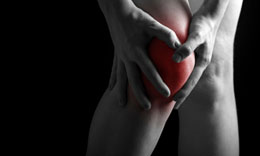When bone spur restricts your movement or causes unbearable pain, it is in your best interest to get it removed surgically. That being said, it may not always be a good option as several factors come into play.

Osteophytes, also referred to as bone spurs, are bony projections that form on a normal bone as a result of inflammation caused by friction of bones against each other. These bony outgrowths are most often seen at the joints and tendons. Though they are usually harmless, in some cases they cause a lot of discomfort and medical intervention becomes necessary.
Bone Spur Treatment Options
As long as they don't cause any discomfort, i.e. they don't restrict the movement of affected area or cause pain, you don't have to worry about bone spurs. But if they do, it is in your best interest to opt for treatment before the condition worsens. Normally, treatment options revolve around the treatment of underlying condition which has resulted in formation of bone spur. These may include exercises, stretching of the affected area, avoiding footwear which puts pressure on heels, weight loss, etc. If none of these non-surgical options help, then bone spur surgery can be considered.
Surgical Removal of Bone Spur
The surgical process is generally aimed at repair or replacement of the joint which has suffered significant damage due to the growth of extra bone. It can be executed as an open surgical process or as an arthroscopy. In case of open surgery, the skin around the joint is cut open to gain access to bony outgrowth which has to be removed. In case of arthroscopy, small incisions are made to insert surgical tools which are used for the removal of these bony outgrowths. On the basis of preliminary diagnosis and your medical history, the doctor will be in a better position to say which of these would be ideal for you.
Heel bone spur surgery may involve making an incision either on the side or the bottom of the heel, identifying the spur, and removing it. In case of pain and neurological symptoms caused by bone spurs in the shoulder, the doctor might recommended a laminectomy. At times, the doctor may also recommend surgical corrections, wherein a small incision will be made in the affected region and the bone will be polished using a rasp or power burr. It is important to discuss the benefits as well as the risks of opting for the surgical procedure beforehand.
Though negligible, the chances of infection or recurrence of bone spur do exist. The person should make it a point to take ample rest after the surgery. Though the recovery time usually ranges between ten days to a few weeks, in some cases it may take even longer. In case of heel spur surgery, the patient will be advised to wear post-operative shoes for a brief period or do some simple exercises, so as to rule out the chances of further complications.
Symptoms to Watch Out ForBone spur symptoms will depend on which part of the body is affected. Difficulty in bending your knees, hard lumps under the skin, numbness in the spine, difficulty in shoulder movement, difficulty in swallowing, etc. are some of the most common symptoms of bone spur. In most of the cases, these bony projections will go on their own; at times though, you may have to undergo medical treatment, or even a surgery, to get rid of them.
Bone spur surgery should only be used as the last option, when non-surgical treatment options fail to yield any results. If the condition is diagnosed early, even conservative methods like resting and use of ice pack, can provide relief from the pain and discomfort associated with it.
Disclaimer: This article is for informative purposes only, and should not be used as a replacement for expert medical advice.


 Osteophytes, also referred to as bone spurs, are bony projections that form on a normal bone as a result of inflammation caused by friction of bones against each other. These bony outgrowths are most often seen at the joints and tendons. Though they are usually harmless, in some cases they cause a lot of discomfort and medical intervention becomes necessary.
Osteophytes, also referred to as bone spurs, are bony projections that form on a normal bone as a result of inflammation caused by friction of bones against each other. These bony outgrowths are most often seen at the joints and tendons. Though they are usually harmless, in some cases they cause a lot of discomfort and medical intervention becomes necessary.